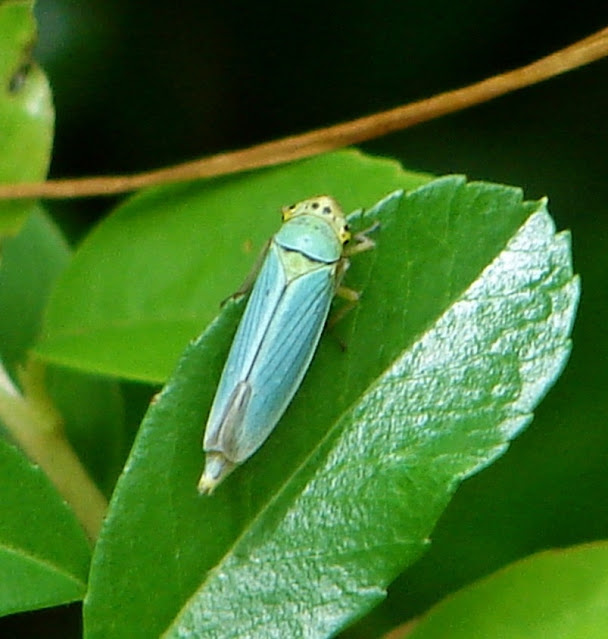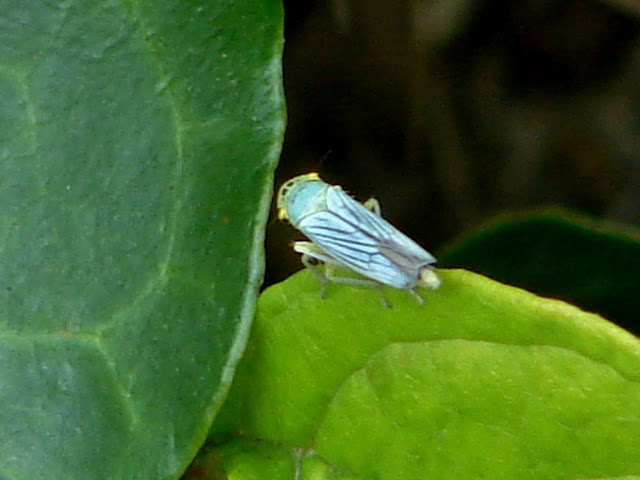I discovered these small conjoined insects in the Pyracantha hedge, and they stayed conjoined for well over an hour. They were no bigger than 1 cm in size.They are not the most handsome of insects, it's true, but the interesting thing about them are what seem to be ear-like projections.
They seem to have wings, but don't look like any insect I have ever seen, They were in a difficult position to get my camera near, or perhaps photos of a different angle for better identification purposes.
I have tried to identify them in many of my insect books, on Google, and Wikipedia without success. If anyone knows their identity, I would be grateful for your input. The closest I have come to their ID is the "Brown Cicada" but I'm not sure.
Another tiny insect, found in the hedge, was this rather pretty blue insect, less than 1 cm in size.
It could be a female Green Leaf-hopper, but it was more blue than green. If it is a leaf-hopper, they are considered to be a pest.
It was the lovely bluish colour that drew my attention to it.
It was definitely aware of my presence. and here it appears to be looking right at me.
This is the field behind the hedge, it's on our land, and it's the only field we leave to grow wild. It's here where I found all the little insects, both in the hedge, and in the field.
Way out in the middle of the field, I noticed this flower, with a dark patch, but it was only when editing that I saw what was hiding there, and that the dark patch was the spiders home. How ingenious!! It was so well disguised! The crab spider does not spin a web, but waits for it's prey on flowers, and other vegetation.
There were many different kinds of grasshopper,
This was a tiny speck of white, and at first glance, it appeared to be something a bird had left behind. I have no idea what it is, and it isn't in focus, but I'll keep trying to ID it,...any ideas anyone!!
An interesting little spider with very long hairy legs.
No ID here either.
The moment I saw this tiny insect, I knew I was looking at my first sighting of a Plume Moth, from seeing much better images than this one, on other nature blogs. Scientific name is Pterophoridae. The moth is harmless. It feeds on nectar/pollen of various herbaceous plants. The caterpillars feed on bindweed.
A Crab Spider with what appears to be a Flesh Fly.
Last week I didn't blog at all, due to severe back pain, it is too painful for me to sit at the computer. This post has been ready to post for some time, so all I have to do is post it, but I can not do any visiting.




























